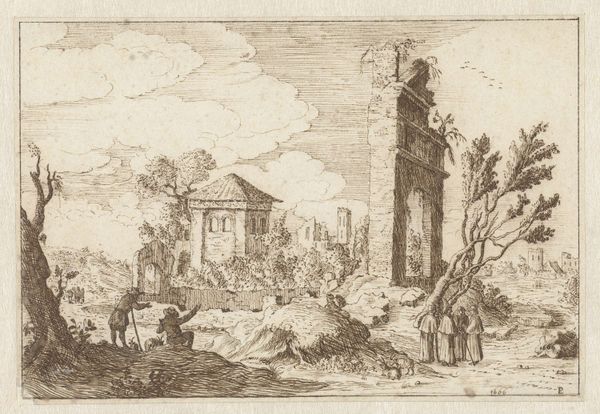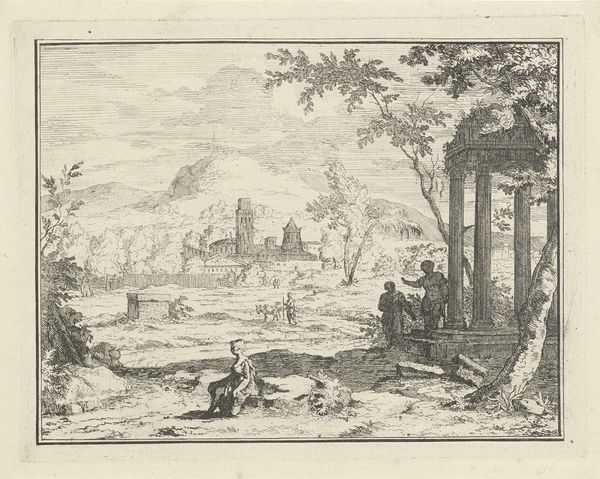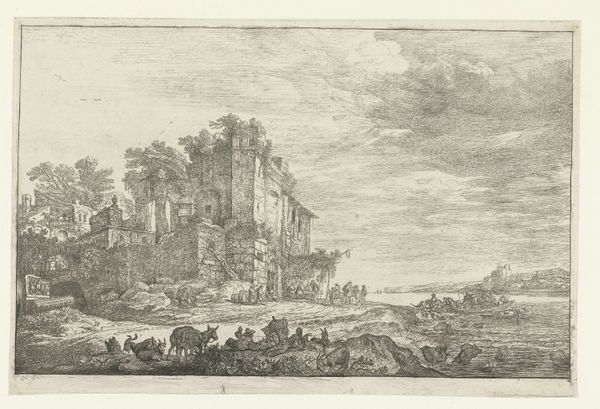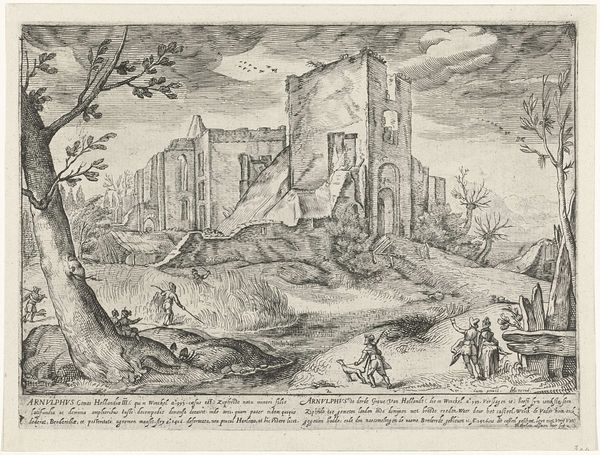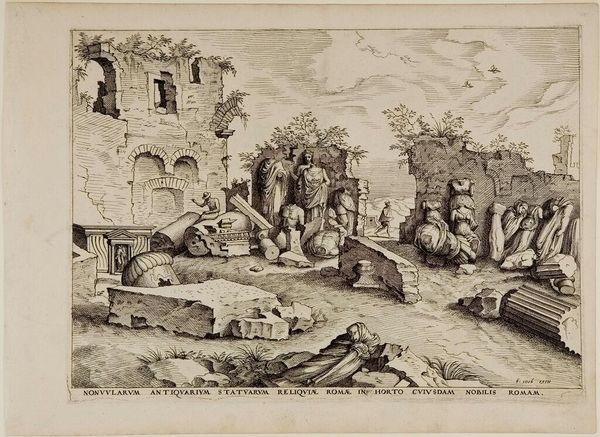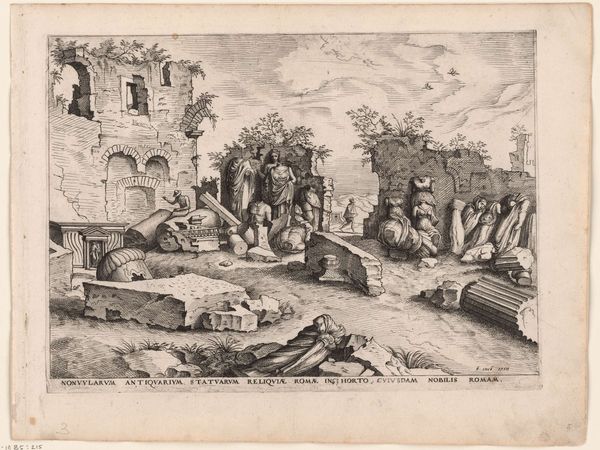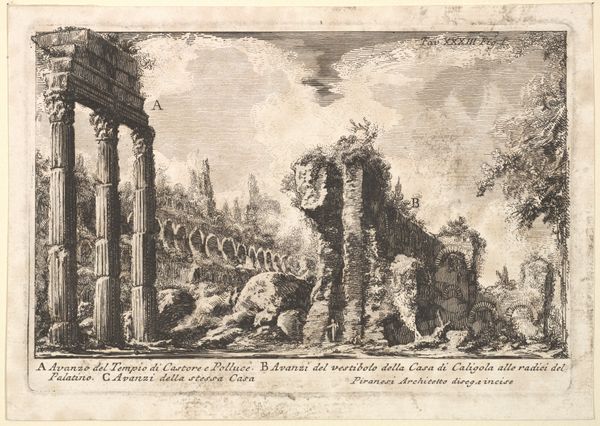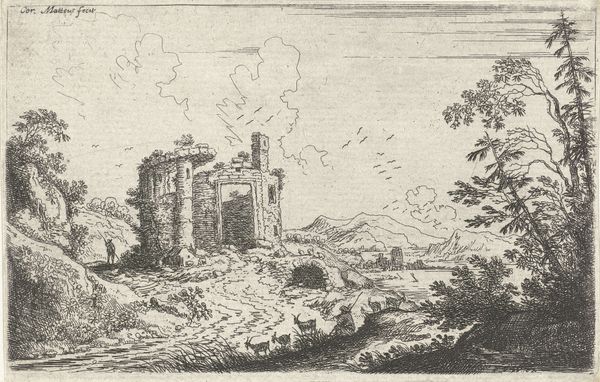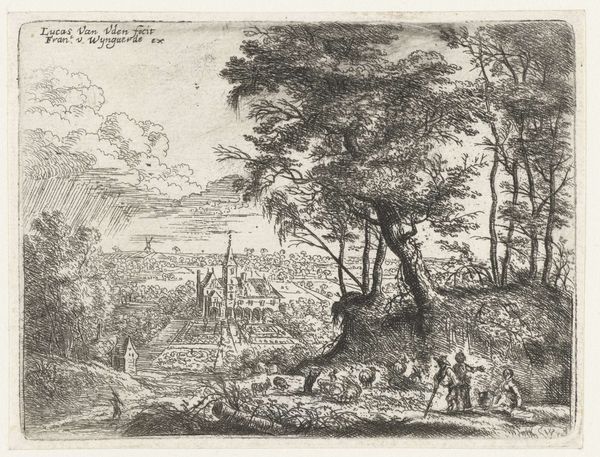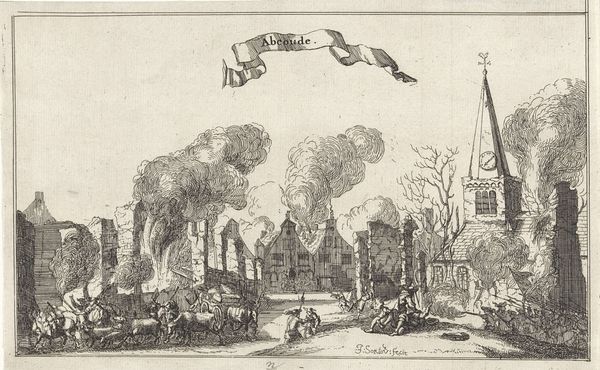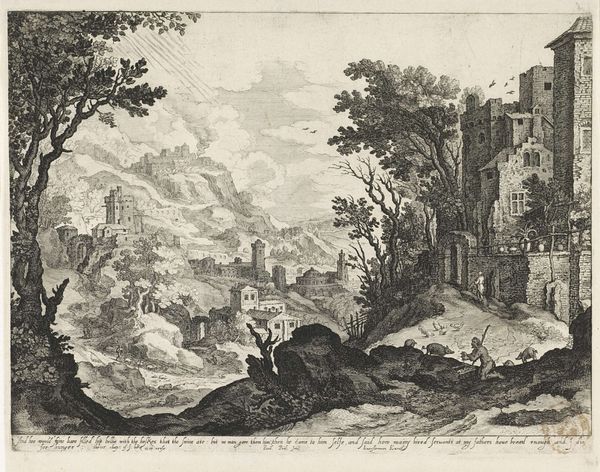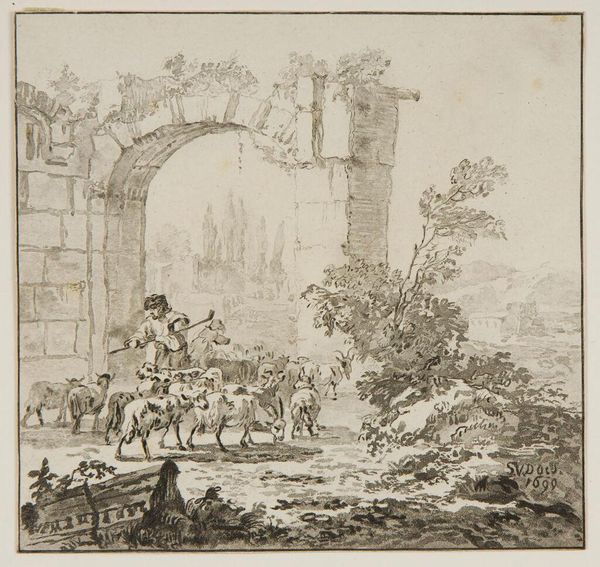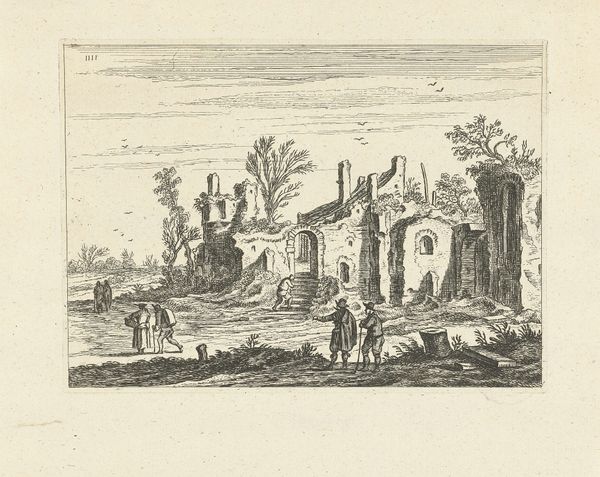
drawing, print, etching, paper, ink, engraving
#
drawing
#
baroque
# print
#
etching
#
landscape
#
paper
#
ink
#
history-painting
#
engraving
Dimensions: height 158 mm, width 259 mm
Copyright: Rijks Museum: Open Domain
Curator: Looking at this etching, my first impression is one of devastation and displacement. The smoke billowing behind the skeletal remains of buildings creates an oppressive atmosphere. Editor: Indeed. This print, dating from 1672-1676, depicts Overmeer, a town in the Netherlands, destroyed by the French in 1672 during the Franco-Dutch War. The artist is Isaac Sorious. Curator: It is interesting how Sorious chose to represent this event. It's not just about the destruction itself, but also about its impact on people and their displacement. We see figures on horseback amidst the wreckage, seeming lost and disoriented. The entire scene speaks to trauma on multiple levels. Editor: Exactly. Consider the socio-political context of this print. It would have served as propaganda, fueling anti-French sentiment and rallying support for the Dutch cause. The detailed rendering of the destruction underscores the violation and the injustice. Think about the impact of representing violence and the "other" through a powerful landscape like this one. Curator: Right. How does the landscape function beyond just setting the stage? Is it commenting on power structures, gendered spaces and social class? Editor: The deliberate depiction of vulnerable figures contrasted with armed soldiers subtly critiques the power dynamics inherent in war and colonialism. And while the print highlights loss and destruction, there are no explicit indicators of which gender has been affected the most, and how they dealt with the post-conflict effects. We would benefit by researching this aspect to know who the print caters to, as these clues are missing. Curator: Absolutely. There’s an intersectionality present, though, wouldn't you agree? One where power and trauma collide. Perhaps Sorious wanted to emphasize universal suffering that comes from the conflict, across any personal characteristic. It brings a very pertinent lens through which we understand social inequalities still evident today. Editor: It's a haunting reminder that even seemingly distant historical events have very current resonances regarding displacement, the ethics of conflict and who bears its costs. Curator: It serves as a strong caution that we all carry different lived realities, so there can be conflicting viewpoints based on positionality in contemporary theory and debate about artworks with depictions of conflicts. Editor: Thank you, this historical contextualization certainly opens avenues to future dialogues about art as a testament and tool for political agendas.
Comments
No comments
Be the first to comment and join the conversation on the ultimate creative platform.
